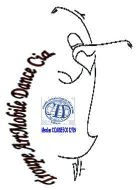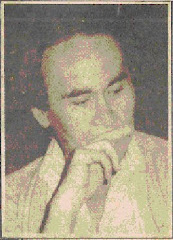TELLES, Giséle Meinhardt. O toque como signo. 2010. 33f. Trabalho de Conclusão de Curso (Graduação em Dança) - Universidade Luterana do Brasil, Canoas, 2010.
RESUMO
O uso do toque, na correção de exercícios físicos e suas conseqüências relacionadas ao sistema emocional de crianças, jovens e adultos, têm sido objeto de diversos estudos na área da Educação, Medicina e Educação Física. Na área do ensino da dança, mais especificamente, do ensino do ballet clássico, essa discussão foi até então, pouco abordada. O objetivo dessa pesquisa é analisar o valor educativo do toque utilizado na correção dos movimentos durante o ensino-aprendizagem do ballet clássico, buscando investigar se haverá prejuízo no caso desse toque não ser aplicado. Essa investigação utiliza uma metodologia de caráter interpretativo, na qual se aliam experiências e vivências pessoais como pedagoga no ensino do ballet clássico, pesquisa bibliográfica e análise de alunos em sala de aula, resultando em considerações e interpretações sobre as mesmas. Partimos da premissa de que o ballet clássico, uma técnica de dança rígida e sistematizada, para ter a garantia de seus movimentos bem executados, necessita do contato tátil, além do comando verbal, nas suas correções. A presente análise nos leva a considerar fundamental que o professor de ballet clássico faça uso da comunicação tátil para melhor orientar seus alunos no que tange às exigências técnicas, posturais e de movimentos do ballet clássico.
Palavras-chave: Ballet; Aprendizagem; Toque; Individualidade.

ABSTRACT
The use of the touch, in the correction of physical exercises and its consequences related to the emotional system of children, young and adults, has been object of diverse studies in the area of the Education, Medicine and Physical Education. In the area of dance education, more specifically, of the education of classical ballet, this quarrel was until then, little boarded. The objective of this research is to analyze the educative value of the touch used in the correction of the movements during the teach-learning of classical ballet, searching to investigate if it will have any damage to the learning, in the case of this touch not to be applied. This inquiry uses a methodology of interpretative character, in which if they unite personal experiences as educator in classical ballet, bibliographical research and analysis of pupils in classroom, results in considerations and interpretations on the same ones. We leave of the premise that classical ballet, technique of rigid and systemized dance, to have the guarantee of its well executed movements, needs the tactile contact, beyond the verbal command, in its corrections. The present analysis in takes them to consider essential that the teacher of classical ballet makes use of the tactile communication better to guide its pupils in what it refers to the requirements of techniques, stance and movements of classical ballet.
Word-key: Ballet; Learning; Touch; Individuality.
Palavras-chave: Ballet; Aprendizagem; Toque; Individualidade.

ABSTRACT
The use of the touch, in the correction of physical exercises and its consequences related to the emotional system of children, young and adults, has been object of diverse studies in the area of the Education, Medicine and Physical Education. In the area of dance education, more specifically, of the education of classical ballet, this quarrel was until then, little boarded. The objective of this research is to analyze the educative value of the touch used in the correction of the movements during the teach-learning of classical ballet, searching to investigate if it will have any damage to the learning, in the case of this touch not to be applied. This inquiry uses a methodology of interpretative character, in which if they unite personal experiences as educator in classical ballet, bibliographical research and analysis of pupils in classroom, results in considerations and interpretations on the same ones. We leave of the premise that classical ballet, technique of rigid and systemized dance, to have the guarantee of its well executed movements, needs the tactile contact, beyond the verbal command, in its corrections. The present analysis in takes them to consider essential that the teacher of classical ballet makes use of the tactile communication better to guide its pupils in what it refers to the requirements of techniques, stance and movements of classical ballet.
Word-key: Ballet; Learning; Touch; Individuality.







Nenhum comentário:
Postar um comentário